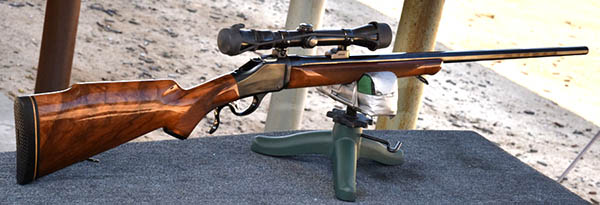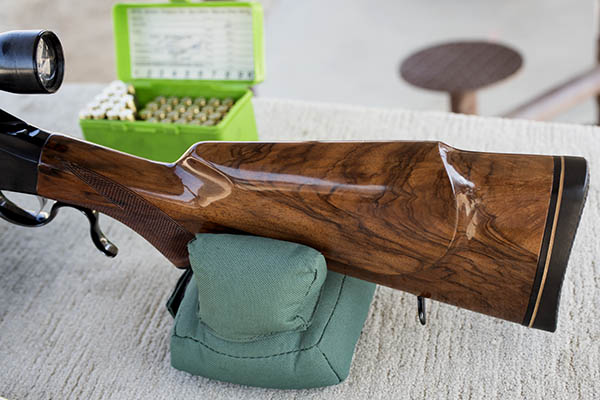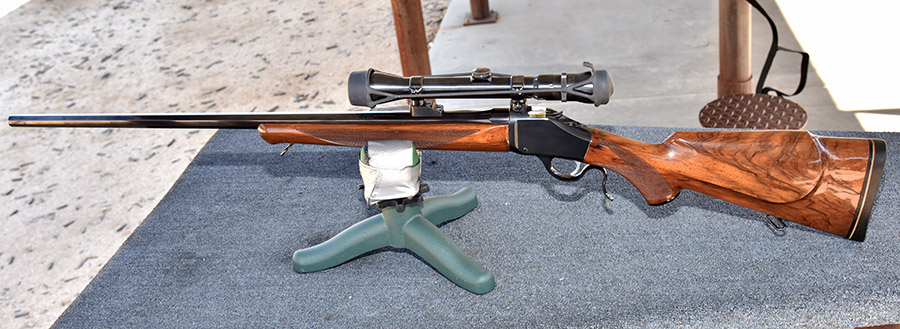Sometime in the late 1970s, when I was an engineer on the F-16 program at General Dynamics in Fort Worth, Texas, I visited a company called National Water Lift somewhere in the Great Lakes area. What we bought from NWL had nothing to do with water (they made the F-16’s hydraulic accumulators). It’s a lead into this story, which is about my Browning B78 rifle. You see, every time I had to visit one of these distant places on my business travels, it was an opportunity to check out the gun shops in the area. Which I did, and the one that stuck in my mind had a Browning B78.
The Browning B78 Rifle
The B78 was a competitor to Ruger’s No. 1 single-shot rifle, and the design was basically a resurrection of the old Winchester High Wall. Ruger did surprisingly well with the No. 1 back in the 1970s (the idea of a single-shot rifle was intriguing to me and many others), and I guess Browning wanted in on the action (pardon the pun).
Help us bring fresh content to you: Please click on the popup ads!
Rugers outsold Brownings probably 10 to 1 (or more) in those days because they were less expensive and Ruger’s marketing was better. But the Browning was (and still is) a very elegant rifle. I saw one at that store (I want to say it was in Kalamazoo, Michigan, but I can’t remember for sure), and it was nice. It was a 30 06 and it had an octagonal barrel, which was all very appealing. But the Browning was a good $100 more than the Ruger and in the 1970s, that kind of money was out of my reach.
Good Deals on Gunbroker
Fast forward 40 years, the Great Recession was upon us, and all kinds of exotic and collectible rifles were popping up on Gunbroker.com (a firearms auction site). I saw what appeared to be a nice B78 on Gunbroker, with an octagonal barrel, in God’s caliber (that would be .30 06), and I pounced. I paid too much, but we never say it that way. I bought too soon. Yeah, that works. I just bought too soon.


After I bought the B78, I wanted to put a period-correct scope on it (you know, from the 1970s) and I found a nice Weaver 2×7 on another auction site. Weavers are good scopes and the ones from the 1970s were blued steel and made in America. It was just what the doctor ordered, and it looks right at home on my B78.
My B78 is used, and it’s got a few nicks and dings on it. But the metal work is perfect, and the walnut is (in my opinion) exhibition grade. Take a look, and you tell me.


Preferred B78 .30 06 Jacketed Loads
I’ve owned the B78 for about 10 years now, and it’s been a lot of fun. I’ve never seen another B78 on the rifle range, and I’ve certainly never seen one with an octagonal barrel. It’s just a cool firearm. But it is finicky. It likes heavier bullets and with the right load it’s accurate, but getting there took a lot of experimenting, a little bit of forearm re-bedding, and a lot of load development. I’ve got two loads that do very well in it…one is a heavy-duty jacketed load, and the other is a cast bullet light load. The heavy load is with a 180 grain Remington jacketed softpoint and a max load of 4064 (I’ve shot three-quarter-inch groups with this load at 100 yards). That load has big recoil, but it’s tolerable. I tried 180 grain Nosler bullets (that’s a premium bullet), but the rifle does way better with the less-expensive Remington bullets. That’s a good thing, because I found a good deal on 900 of those bullets and they have a home on my reloading bench now.
A Preferred B78 Cast Load
My cast bullet load is a short-range low power load, and it’s recoil is almost nonexistent compared to the jacketed load. It’s a 180 grain cast lead bullet (with a gas check) and 17.0 grains of Trail Boss power. After zeroing the Browning for the jacketed bullet load mentioned above at 100 yards, I had to crank the scope up a cool 85 clicks to bring the cast bullets back on paper at 50 yards (I was surprised there was that much adjustment in the scope). But wow, those cast bullets at 50 yards cloverleafed consistently. It was essentially putting them through the same ragged hole. At 100 yards, getting the cast bullet load back to point of aim involved another 25 clicks of elevation on the Weaver, and again, I was surprised there was that much in the scope. At 100 yards, the cast load groups opened up to about 2 ½ inches, and that’s still okay. What’s nice is I can shoot the cast bullet load all day long. The barrel doesn’t heat up and the recoil is trivial. As you might imagine with a load like this and the gas-checked bullets, there was virtually no leading.
When I go for deer later this year, it’s going to be with this rifle. One shot. I think that’s all I’ll need. We’ll see.
Check out our other Tales of the Gun stories here!
Never miss an ExNotes blog…sign up here!
Targets delivered to your doorstep!
We load with Lee dies!

